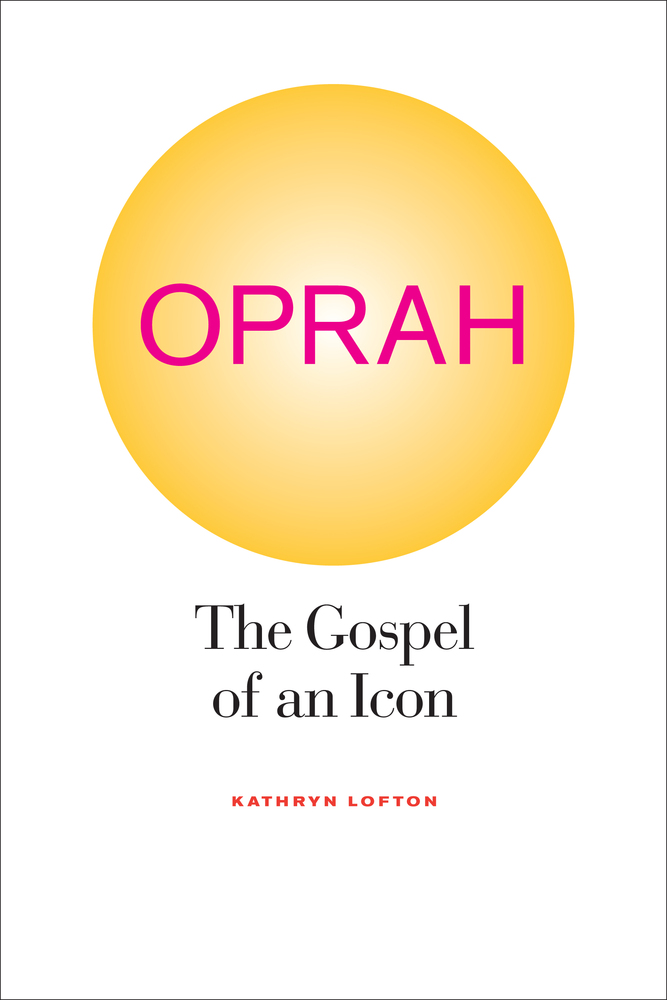 The question that circles while one is reading Kathryn Lofton’s Oprah: The Gospel of an Icon is this: just how wide, just how permeable, just how enveloping is the O of Oprah? According to Lofton, “very” is the answer, and it’s not hard to agree once you start looking around. “Oprah is a way to survive the secular,” Lofton tells us. But what she really means is: maybe she is, maybe she isn’t.
The question that circles while one is reading Kathryn Lofton’s Oprah: The Gospel of an Icon is this: just how wide, just how permeable, just how enveloping is the O of Oprah? According to Lofton, “very” is the answer, and it’s not hard to agree once you start looking around. “Oprah is a way to survive the secular,” Lofton tells us. But what she really means is: maybe she is, maybe she isn’t.
Pervasive presence—or just ordinary ubiquity—is one of the main strategies in Oprah’s attempt to serve as a guide through the jumble of consumer choices, spiritual makeovers, and “original individuality” that is “secular” living in contemporary North America. Reading The Gospel of an Icon gave me a heightened awareness of this ubiquity, a new recognition of the way in which Oprah really is everywhere. As Lofton puts it in one of her clarifying turns of phrase: “She is the divine pervasion.” Some have mused about and imagined what this divine pervasion might entail—Oprah as Messiah, or as saviour of Chicago. Others have pointed to Lofton’s impressive analytical insights: how thinking with Oprah allows her to brilliantly juxtapose “religion,” commodification, and mediation, while also thinking carefully and creatively about how this African-American woman has become so remarkably successful by drawing from, while transforming, Christian testimonial genres and emotional practices.
My own “public” reading of the book is, like those of other contributors, part confession and part analysis—one small step away from Oprahfication itself, perhaps? According to Lofton, when Oprah encourages her viewers and readers to embark on a perpetual “journey” of self-improvement through self-examination, she also counsels them that to make such change happen, they need to surround themselves with the right goods and services. To best participate in the “rituals of reading” prescribed by her Book Club, for example, readers need to create their own private libraries-cum-“sanctuaries” filled with stuff they love: candles, scented oils, bound copies of O Magazine. Reading the Book Club book, like watching the TV show, is supposed to “change your life,” but that can’t happen without the properly decorated “ceremonial space.”
Keeping in mind Oprah’s eye for detail and Lofton’s thesis of divine pervasion, I started thinking about the various environments of my own reading of The Gospel of an Icon—a book that sticks with you even when you’re not turning its pages in a comfy chair with a hot cup of pomegranate green tea at your side. While reading Lofton’s conclusion and epilogue in my favorite, resolutely independent, non-franchised coffee shop, the grey-haired man sitting next to me told his friend of a recent trip to Chicago to visit his new girlfriend. Amid other details that I tried to block out with one finger in my ear, he told his friend about driving along the parkway and hearing the drone of a helicopter overhead as it circled in the sky. There were only two options as to who the passenger might be, the man said with a laugh: Oprah or Obama. This overlap of Os was uncannily—or maybe just coincidentally—the very subject of Lofton’s concluding words, which I was reading at that moment.
Perhaps I shouldn’t have been listening so closely to another’s conversation, you might suggest. But isn’t the coffee shop the alternative confessional, where we tell our companions our latest troubles, regardless of who can hear? Baring your soul over a latte in a cheek-by-jowl café is perhaps not quite the same thing as what Lofton calls “Oprahfication,” namely, “the makeover that happens when individuals agree to subject their private selves to public display.” But the coffee shop confessional (along with streetcar cell-phone tell-alls) is a remarkable testimony to how comfortable people are with revealing the details of their personal relationships, medical procedures, and workplace conflicts to both friends and complete strangers. The difference perhaps lies in what you hope to get out of a coffee shop confession in contrast to submission to Oprahfication: a jolt of high quality caffeine, the understanding of a friend, the prurient interest of a woman reading a yellow book, or abundant gifts of cars and iPods, along with a new and better you.
But Oprah was not only in the coffee shop. Earlier in my reading, at a point when I was about midway through the book, I cycled down a neighborhood street to find a watchful Oprah beaming at me from a billboard high above. “OWN TV,” the message trumpeted, is now available in Canada. Having once been one of those smug people proud to say that they do not even “own” a television, and remaining someone who denies her children the joys of cable, the message didn’t have its full effect on me. But then I realized that, despite never having watched an episode of Oprah from start to finish, I felt a familiarity with Lofton’s descriptions of the narrative arc of Oprah’s version of televised “confessional production”: the extraction of a secret, weakness, or insecurity, the revelation that change is possible, and then the consumer goods that provide the path to realize that change. “At every turn,” Lofton reveals, “there is a hug of self-love and the slap of self-scrutiny.”
Inevitably, it might seem, even reading Lofton’s book did the work of effecting Oprah’s pervasion. Not only did I notice her on the streetscape or in the coffee shop, but I also found her, channeled so convincingly by Lofton, turning up in that running inner dialogue that comes along with reading. Maybe a footstool of just the right height, in a pleasing color would actually help me to concentrate more fully on my reading; maybe a better closet solution would help me de-clutter, or even change, my life. Even with the distancing aid of theoretical scrutiny to hand—the frame of Foucault’s “pastoral practice,” or the revealing but maybe not entirely true insight of Erving Goffman that “a coerced show of feeling is only a show”—Lofton never quite exempts her reader, or herself, from being implicated in the confessional production that is Oprah’s work. Though Oprah as a subject of scholarly analysis may be both a sitting duck and a curiously “profane” choice of focus, Lofton shows us that Oprah’s “spiritual revolution” is part of a larger shift that most North Americans have bought into, to varying degrees: “one of the great success stories of Oprah’s years has been the complete conversion—the conversion of a nation—to consumption as the adjudicating determinant of our relative freedom.”
There are, however, limits to Oprah’s O. I saw them when I raised her as an example while teaching an anthropology course in Germany this past winter. None of my students had heard of her. She was a complete unknown. Recalling this, I realized that The Gospel of an Icon, is a continental, American story, not a fully globalized one, despite the global aspirations of Oprah’s “missionary gifts.” Maybe Oprah really is “provincial.”
Writing from and within a collective “we” that she both scrutinizes and calls to account, Kathryn Lofton offers her book as scholarly analysis and humble jeremiad (if such a genre is possible). The Gospel of an Icon is a historically learned account of how and why Oprah has resonated with Christian traditions of self-improvement, at the same time that she has entertained a diverse public, encouraging them to achieve more with more. She is, as Jason Bivins already intimated, an anti-Nietzsche, who declared in his own autobiography, “I do not want in the least that anything should become different than it is; I myself do not want to become different.”
But then again, in that same book, Nietzsche, in a spirit that Oprah could recognize, also gave a great deal of morally intentional diet advice, such as: “No meals between meals; no coffee, coffee spreads darkness.” Who is the prophet and who is the charlatan? How to speak from the self and of the self? These too are circling questions that none of us can ever entirely escape.











